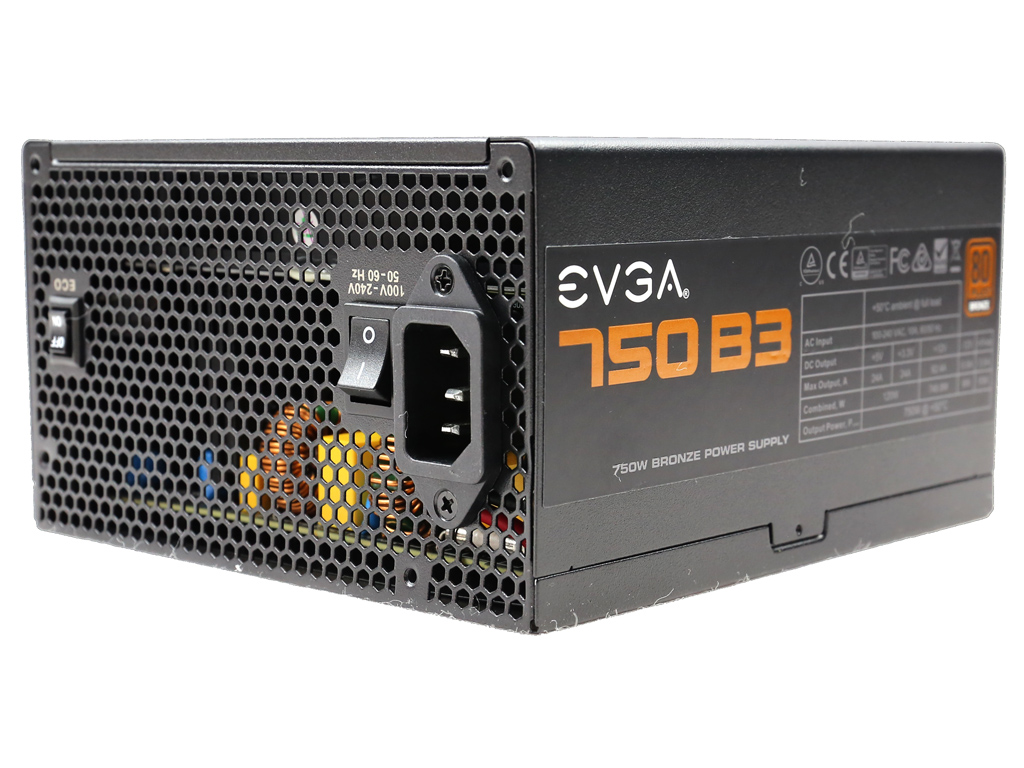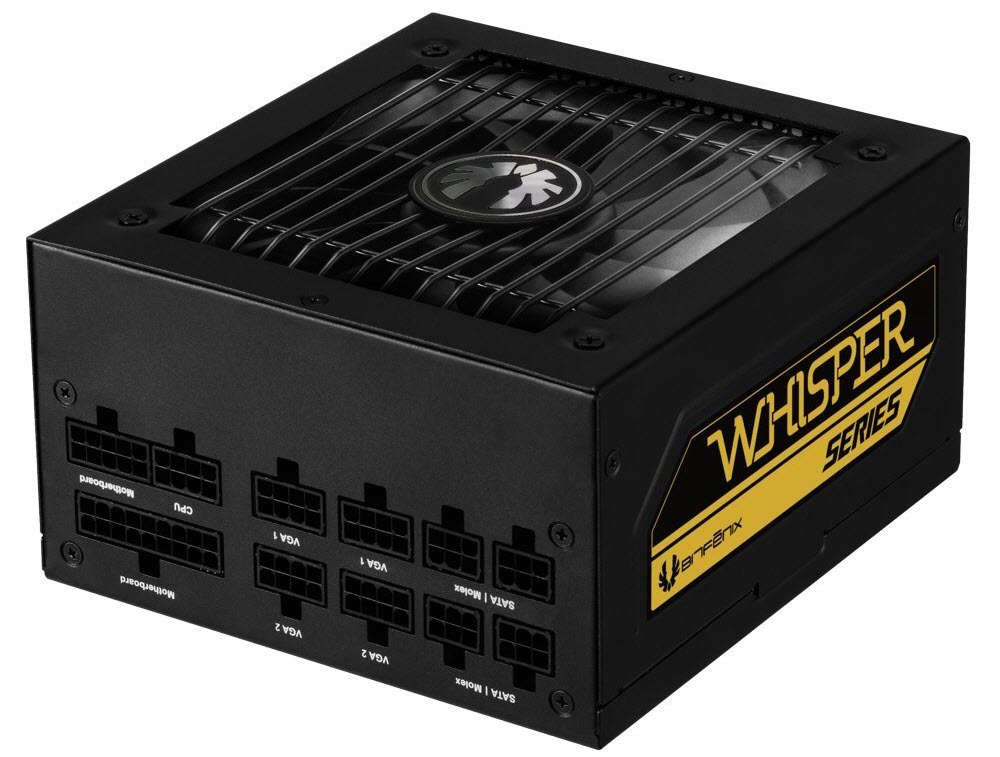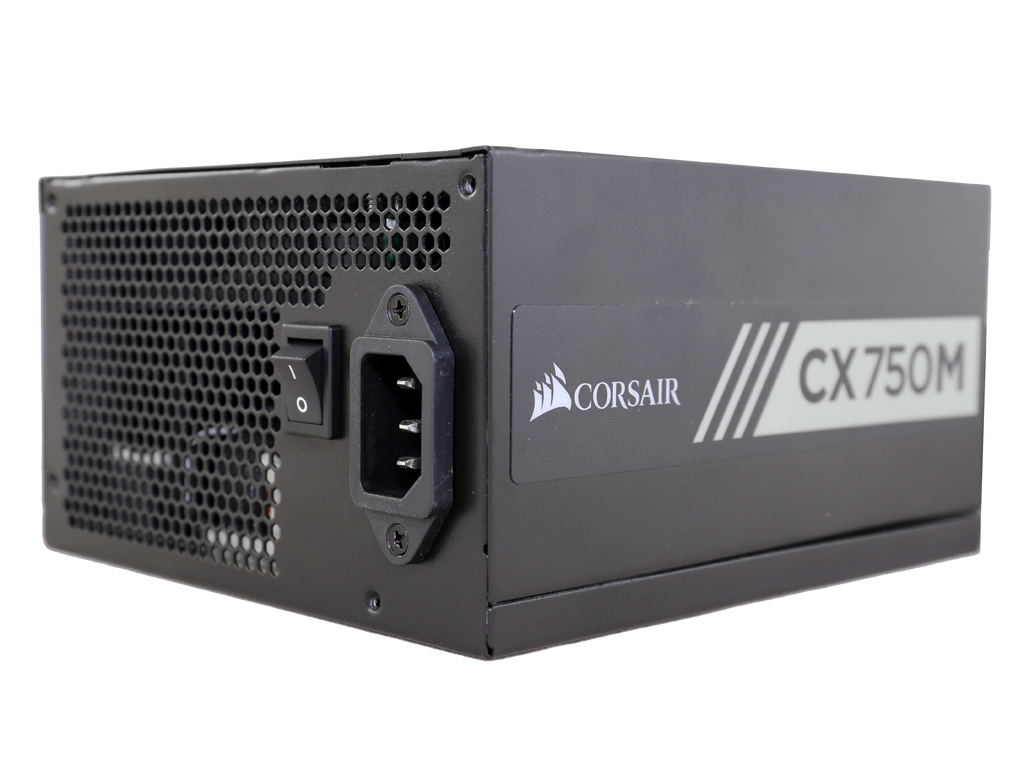EVGA 750 B3 PSU Review
Why you can trust Tom's Hardware
Load Regulation, Hold-Up Time & Inrush Current
To learn more about our PSU tests and methodology, please check out How We Test Power Supply Units.
Primary Rails And 5VSB Load Regulation
Load Regulation testing is detailed here.
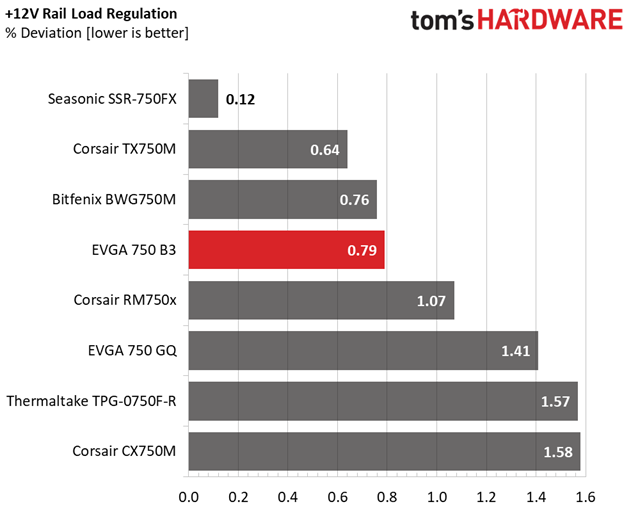
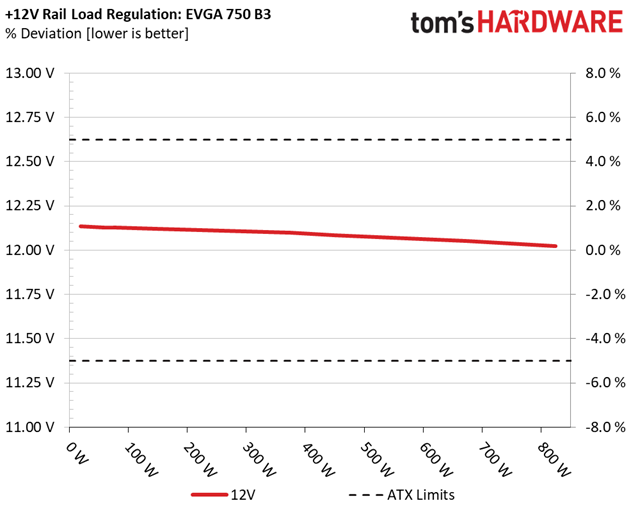
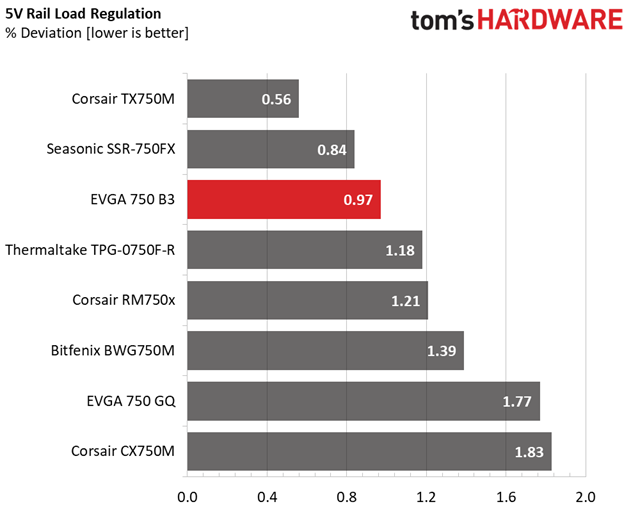
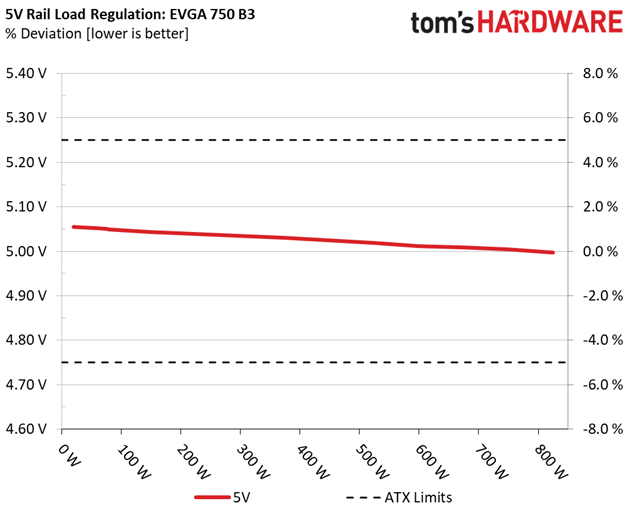
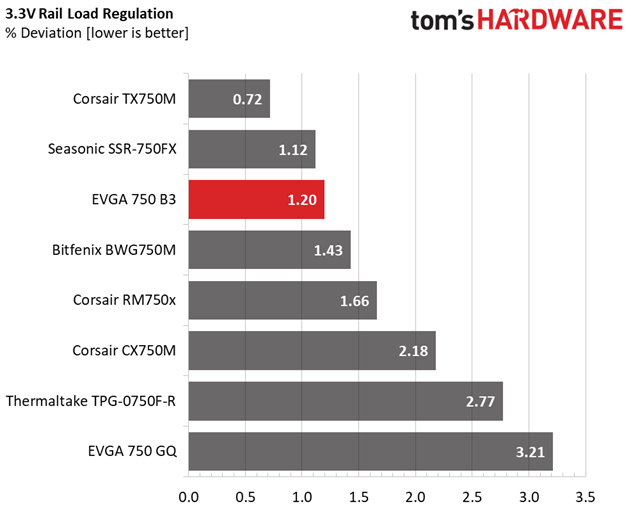
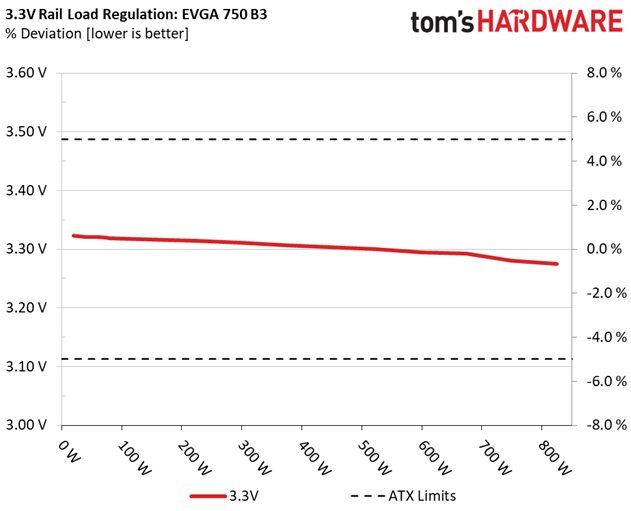
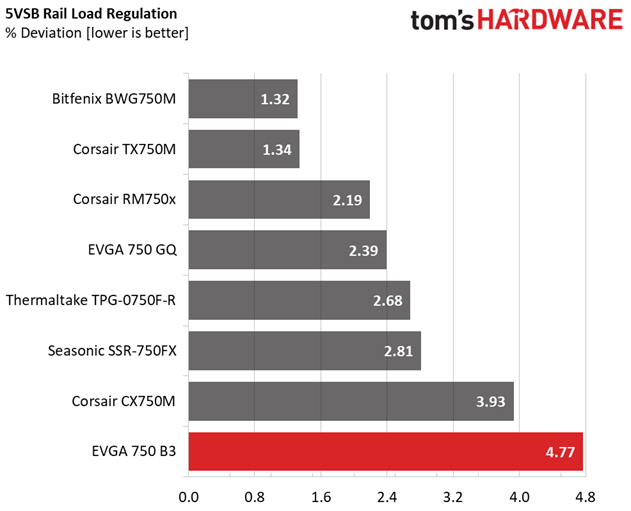
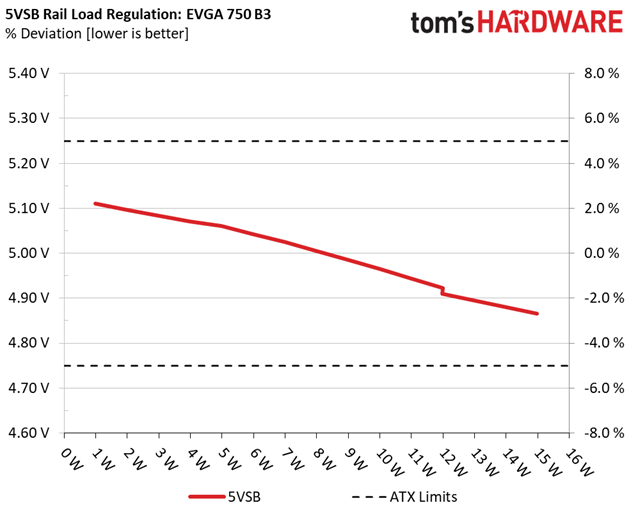
Hold-Up Time
Our hold-up time tests are described in detail here.
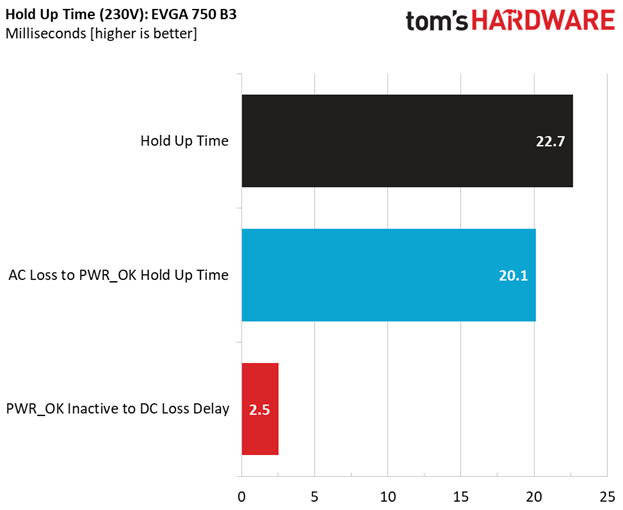
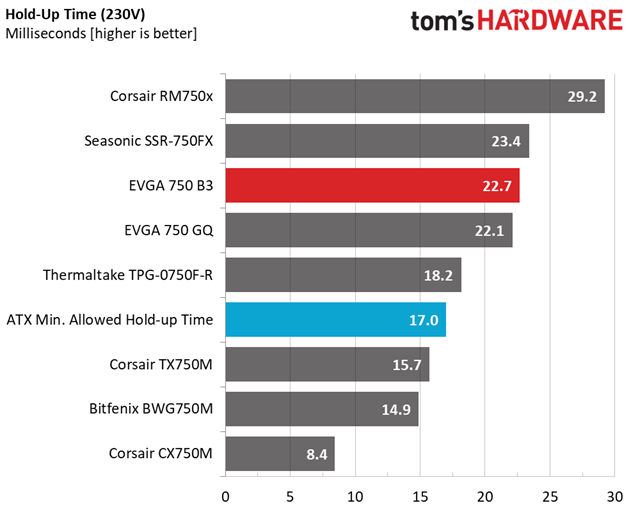
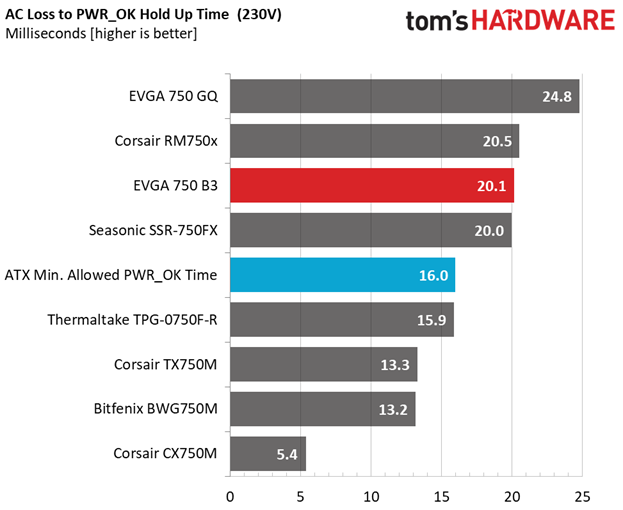
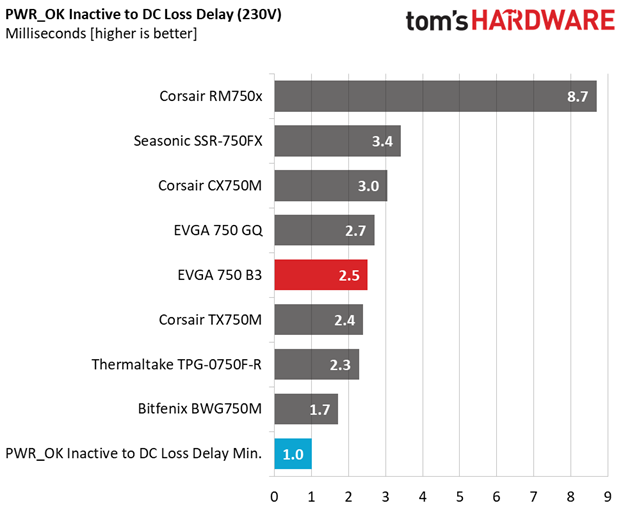
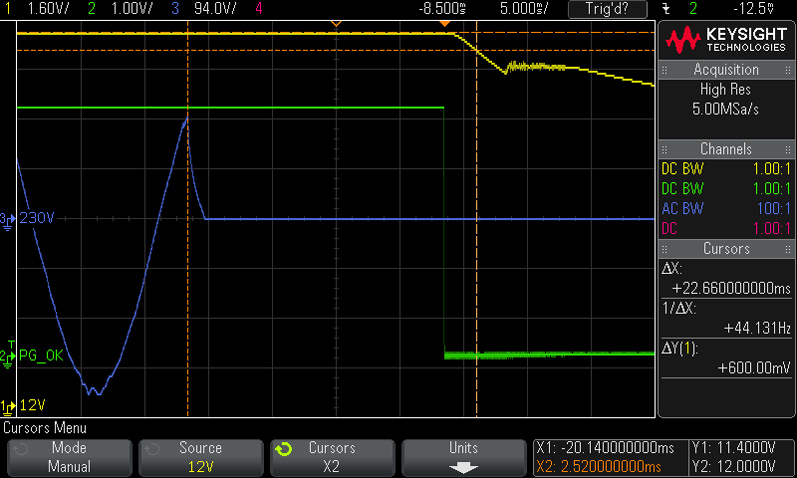
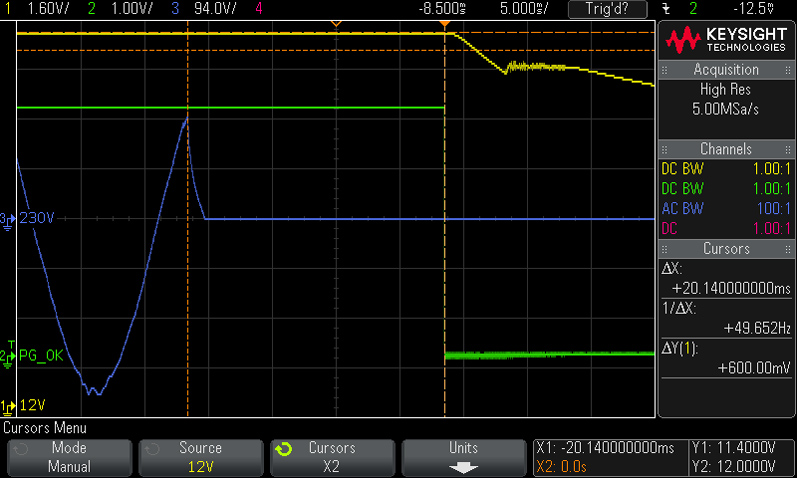
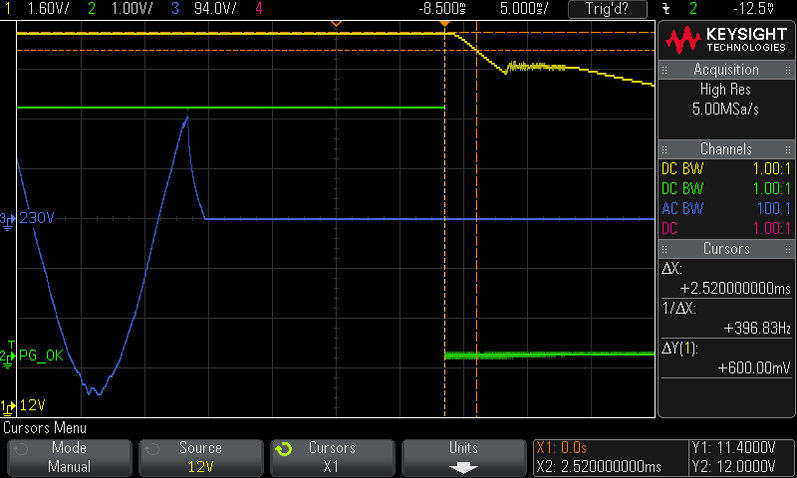
The hold-up time we measure is pretty long, and the 750 B3's power-good signal is accurate.
Inrush Current
For details on our inrush current testing, please click here.
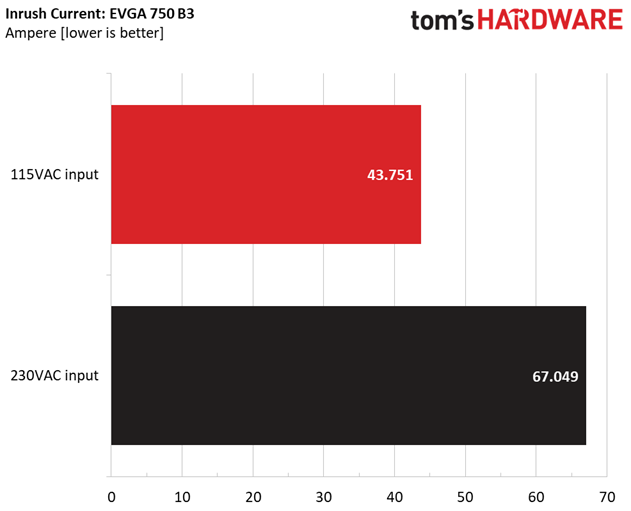
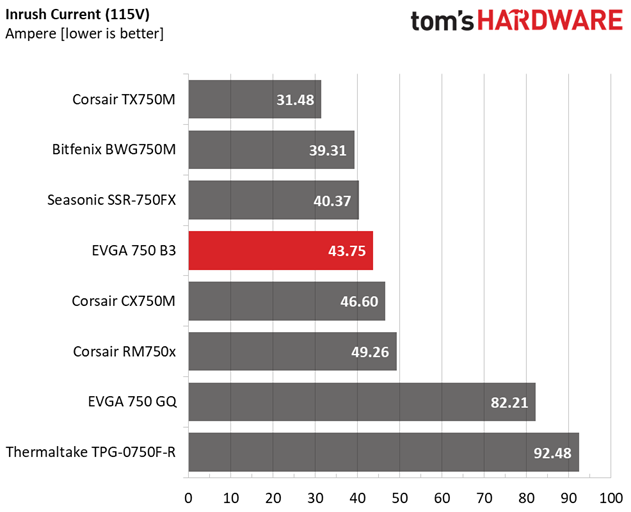
The inrush current is at normal levels with 115V input, but it's quite high at 230V.
Load Regulation And Efficiency Measurements
The first set of tests reveals the stability of the voltage rails and the 750 B3's efficiency. The applied load equals (approximately) 10 to 110 percent of the PSU's maximum load in increments of 10 percentage points.
Get Tom's Hardware's best news and in-depth reviews, straight to your inbox.
We conducted two additional tests. During the first, we stressed the two minor rails (5V and 3.3V) with a high load, while the load at +12V was only 0.1A. This test reveals whether a PSU is compatible with Intel's C6/C7 sleep states or not. In the second test, we determined the maximum load the +12V rail could handle with minimal load on the minor rails.
| Test # | 12V | 5V | 3.3V | 5VSB | DC/AC (Watts) | Efficiency | Fan Speed | PSU Noise | Temps (In/Out) | PF/AC Volts |
|---|---|---|---|---|---|---|---|---|---|---|
| 1 | 4.385A | 1.984A | 1.984A | 0.985A | 74.767 | 78.388% | 0 RPM | <6.0 dB(A) | 42.57°C | 0.956 |
| 12.127V | 5.050V | 3.320V | 5.060V | 95.381 | 38.14°C | 115.19V | ||||
| 2 | 9.808A | 2.971A | 2.981A | 1.188A | 149.737 | 82.908% | 1180 RPM | 26.7 dB(A) | 40.01°C | 0.982 |
| 12.120V | 5.044V | 3.317V | 5.042V | 180.607 | 44.56°C | 115.19V | ||||
| 3 | 15.583A | 3.479A | 3.496A | 1.391A | 224.879 | 85.474% | 1218 RPM | 27.3 dB(A) | 40.19°C | 0.989 |
| 12.114V | 5.039V | 3.314V | 5.025V | 263.096 | 44.85°C | 115.20V | ||||
| 4 | 21.355A | 3.977A | 3.983A | 1.595A | 299.740 | 86.755% | 1240 RPM | 27.8 dB(A) | 40.40°C | 0.992 |
| 12.107V | 5.035V | 3.311V | 5.005V | 345.503 | 45.39°C | 115.19V | ||||
| 5 | 26.802A | 4.974A | 4.986A | 1.803A | 374.721 | 86.934% | 1315 RPM | 30.4 dB(A) | 40.85°C | 0.994 |
| 12.097V | 5.030V | 3.307V | 4.985V | 431.041 | 46.07°C | 115.19V | ||||
| 6 | 32.255A | 5.975A | 5.991A | 2.010A | 449.621 | 86.672% | 1425 RPM | 32.3 dB(A) | 41.39°C | 0.995 |
| 12.086V | 5.024V | 3.303V | 4.965V | 518.762 | 46.64°C | 115.19V | ||||
| 7 | 37.723A | 6.982A | 6.996A | 2.222A | 524.620 | 86.079% | 1518 RPM | 35.4 dB(A) | 42.14°C | 0.996 |
| 12.075V | 5.019V | 3.300V | 4.944V | 609.464 | 47.49°C | 115.22V | ||||
| 8 | 43.204A | 7.984A | 8.010A | 2.435A | 599.523 | 85.391% | 1645 RPM | 37.4 dB(A) | 42.86°C | 0.996 |
| 12.062V | 5.012V | 3.295V | 4.923V | 702.091 | 48.44°C | 115.19V | ||||
| 9 | 49.128A | 8.487A | 8.535A | 2.440A | 674.581 | 84.523% | 1796 RPM | 41.4 dB(A) | 44.65°C | 0.996 |
| 12.050V | 5.009V | 3.292V | 4.910V | 798.101 | 50.49°C | 115.19V | ||||
| 10 | 54.814A | 9.002A | 9.050A | 3.078A | 749.458 | 83.619% | 1910 RPM | 42.1 dB(A) | 45.68°C | 0.996 |
| 12.036V | 5.004V | 3.281V | 4.866V | 896.273 | 51.81°C | 115.19V | ||||
| 11 | 61.100A | 9.012A | 9.065A | 3.085A | 824.374 | 82.633% | 2014 RPM | 43.1 dB(A) | 47.08°C | 0.997 |
| 12.024V | 4.998V | 3.275V | 4.855V | 997.629 | 53.48°C | 115.18V | ||||
| CL1 | 0.098A | 14.027A | 14.003A | 0.004A | 117.483 | 75.801% | 1425 RPM | 32.3 dB(A) | 44.06°C | 0.977 |
| 12.119V | 5.027V | 3.268V | 5.087V | 154.989 | 49.72°C | 115.20V | ||||
| CL2 | 62.446A | 1.003A | 1.002A | 1.002A | 764.673 | 83.995% | 1945 RPM | 42.1 dB(A) | 46.78°C | 0.997 |
| 12.032V | 5.013V | 3.287V | 4.991V | 910.382 | 52.70°C | 115.19V |
Load regulation is fairly tight on all of the rails except for 5VSB, which is worth noting from a budget-oriented platform. Meanwhile, the 750 B3 delivers full power at very high ambient temperatures (>45°C) without breaking a sweat. Its output noise remains low until the 50% load test, after which it exceeds 30 dB(A) during the sixth test and more than 40 dB(A) from the ninth test and up. Generally, though, the fan profile isn't that aggressive, considering this is a relatively low-efficiency PSU.
MORE: Best Power Supplies
MORE: How We Test Power Supplies
MORE: All Power Supply Content
Current page: Load Regulation, Hold-Up Time & Inrush Current
Prev Page Teardown & Component Analysis Next Page Efficiency, Temperature & Noise
Aris Mpitziopoulos is a contributing editor at Tom's Hardware, covering PSUs.
-
Dark Lord of Tech Several complaints in the forums from builders , very disappointed with the B3 series.Reply -
logainofhades Yea, I will no longer recommend a B3 series PSU. Seasonic and Corsair's new CX450m-650m are better options right now.Reply -
SinxarKnights The solder quality between review samples and retail samples is pretty shady in of itself IMO.Reply -
10tacle The fact that EVGA hasn't even responded to the 450W B3 fail test that was back in August is highly disturbing in an of itself. It is inexcusable to just ignore a tech website's inquiry (and serious concerns) as to why a series of their products are failing. I know EVGA's customer support is top notch in the industry (I've had to use it), but their public/customer relations team needs an overhaul. If I were the CEO, I'd be calling for some heads and light a fire under some backsides to ride Super Flower hard for a fix.Reply -
maxwellmelon with out them identifying the failed component how can they say that the PSU not turning back on after a OPP is not intentional setup because it being shut down at 120% of load is about right like they said. It could be designed that way as a safety feature. and a way to sell more psu because when you try to RMA it they can say you overloaded it and is not covered. Operating above 750 watts is above the psu limits and having a one time OPP shut down is still technically having OPP on it.Reply -
Aris_Mp When a PSU is broken after OPP's triggering, it is not a feature but a problem. OPP along with the rest of the protections is there to protect the PSU in order not to break when a user goes wild with it.Reply -
Lutfij The third paragraph of the last page reminded me of what cars with all souped up aftermarket parts but a crappy driver often results with - disaster.Reply
EVGA Have recently come under flack on other forums as well and their response isn't, erm, admirable. Nice work with the review, Aris, keep it up! -
rtansey378 They must be having issues in the CS department. After dealing with them for an RMA I found their website to be down totally twice and fundamentally broken in important other areas during RMA submission. I was getting different answers from different people to basic questions and there were unreturned emails that led to other issues - it was kind of a nightmare overall that went on for a month. Even after being expedited to a manager of some type it wasn't much better. And their 2-3 advance RMA uses UPS ground so it is not 2-3 days at all. It routinely takes them 3 days to get the replacement into UPS' hands and then UPS takes their sweet time. People also use their expensive desktop PCs for work. I went through that twice as they sent the wrong unit back the first time.Reply
They charge a premium largely on their CS reputation. I guess they are now hoping people won't have to use it and learn otherwise. Being branded as a good guy in the CS is huge. Being branded as a bad guy is a death sentence. You'd think they would at least return major website emails and spin use some good old corporate spin. They won't even do that. Makes you wonder.
I hope they figure it out. But Im no longer going to pay their premium. If they have the cheaper product then I would still consider them. That will rarely be the case. They did some nice patented stuff with their GTX 1070/1080 revisions so maybe they are putting all their eggs in that basket. -
mlee 2500 Wow, I expect better from something EVGA puts their name on.Reply
THANK YOU tom's HARDWARE for performing objective tests on multiple samples to keep us informed and the vendors honest....
I seriously could have seen myself buying my next PSU based on EVGA's reputation alone. I won't make that that mistake now.
